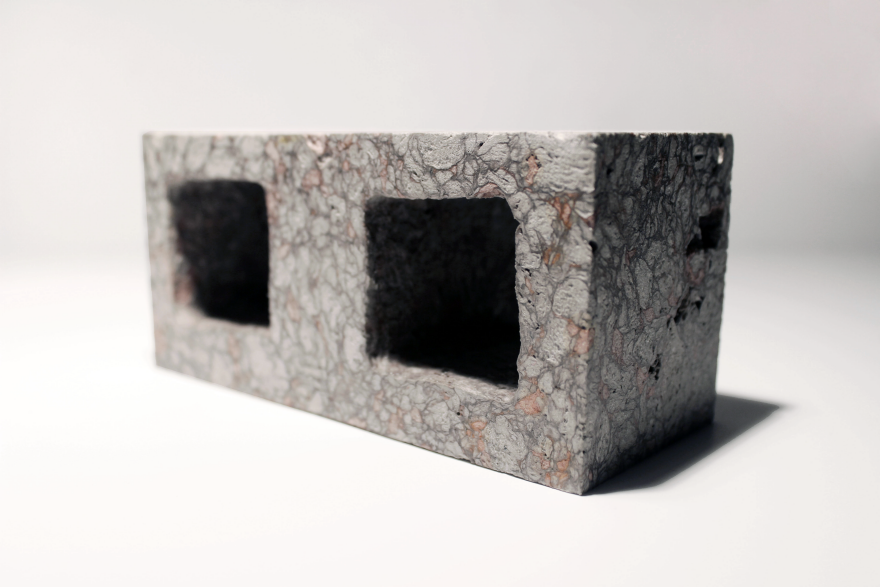#HTE
Furniture Made from Recycled Newspaper Offers Up Eco-Friendly Elegance
Despite a currently bleak-looking sustainable climate, designers’ forays into eco friendly architectural and building solutions can sometimes offer a quick glimpse of hope for our future. This is perhaps most evident in projects where one man’s literal trash becomes another man’s treasure (one example that comes to mind are recycled “bottle bricks”).
For Dutch Design Week 2016, Eindhoven-based designer WooJai Lee debuted his PaperBricks Project, which takes a note from this book, after he noticed the daunting amount of paper waste he sees thrown out on a daily basis. “I was taking out [trash] one day and saw huge piles of paper,” Lee mentions when discussing his initial inspiration for the project, “most of them were newspapers and advertisements we look at for a few minutes and then throw away. I found it a pity how so many papers are produced yet how many are thrown away so quickly."


The result of this inspiration was a furniture collection constructed using molded brick structures made out of recycled paper. Uncanny to cement blocks at a distance, the bricks used to construct the furniture surprisingly present themselves as fuzzy, textural and playful as you zoom further in on the final product. Perhaps less surprising: getting there took a lot of experimentation and testing. "I didn’t have much knowledge in paper so I had to start with the basics…different types of paper, different mix ratios, etc,” says Lee. Created by combining paper pulp with glue, Lee started off by testing tons of different papers and binding materials. He ultimately decided to go with newspaper as it was the most readily available material and would probably make for a lasting sustainable model.
Next, Lee had to test different adhesives, “so that the bricks could be strong but at the same time has that soft, texture-like tactility,” the designer notes.
 Different material samples created by Lee
Different material samples created by Lee
To make the bricks, Lee came up with a fairly straightforward manual manufacturing process: recycled newspapers were made into paper pulp, which was then mixed with glue and pressed into molds the shape of standard bricks (in case anyone was curious, it takes about 6 to 7 whole newspapers to create one brick). Lee emulated the standard dimensions of a cement block in order to, as Lee writes, “minimize the material use and deformation while maximizing the strength.” Adding his own twist to the forms, he created molds with their own internal joinery system that allowed them to be easily assembled into furniture—a clever solution that may even ensure more consistency than traditional wood joinery methods.

As for the endurance of these paper articles, there still seems to be a lot of testing left to do. As Lee notes, he has yet to test the weight limits of the furniture, although he does know they are strong enough to support a couple of people sitting on them.
This type of research and more is all part of Lee’s next steps in streamlining his PaperBricks collection, in hopes of eventually bringing the pieces to market. The greatest challenge of this project, as Lee noted, was creating these bricks without machines or manufacturing systems: “[I’m hoping to] incorporate machines and tools in the production so that they can be made faster with less labor. I make them all by hand at the moment…The process required to building PaperBricks are already practiced in the paper industry, so I think transferring to bigger scales won’t be much of a problem."

Does PaperBricks have the potential to work in architectural scale? Lee is hoping to figure this out too. "Paper has the potential to be a good architecture material due to it’s insulating and sound isolating qualities,” which is why Lee is now further developing his concept to include the creation of wall panels and room dividers.
Although PaperBricks is a student project still in development, the opportunities for innovation and expansion are more than clear—and hopefully in the future, more designers can strive to innovate not only by creating new materials, but also reimagining and reforming old ones.
http://www.core77.com/posts/58680/Furniture-Made-from-Recycled-Newspaper-Offers-Up-Eco-Friendly-Elegance
